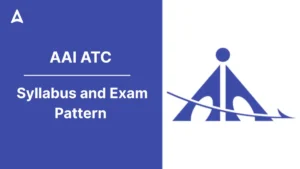(a) Credit cards
(b) Loan against gold from financial institute
(c) Debit cards
(d) Money lender
(e) None of the above
Q2. What is meant by ‘Underwriting’ the term frequently used in financial sector?
(a) Under valuation of the assets
(b) The Act of taking on a risk
(c) Giving a Guarantee that a loan will not become a bad loan
(d) All of the above
(e) None of the above
Q3. As we have noticed many banks of Indian origin are opening offices/branches in foreign countries. Why is this trend emerging at a very fast pace?
I. These Banks wish to provide banking facilities to foreigners as banking facilities are not plenty in many foreign countries. India wants to take an advantage of the situation.
II.These banks wish to help Indian firms to acquire funds at internationally competitive rates.
III. These banks wish to promote trade and investment between India and other countries.
(a) Only I
(b) Only II
(c) Only III
(d) Only II and III
(e) None of the above
Q4. Many economists, bankers and researchers in India often advocate that banks should equip themselves for new challenges. These challenges are in which of the following shapes/forms?
I. As India economy is getting increasingly integrated with the rest of the world the demand of the Corporate banking is likely to change in terms of size, composition of services and also the quality.
II. The growing foreign trade in India will have to be financed by the local banks.
III. Foreigners are habitual of the comforts provided by the technology. India has to do a lot in this reference.
(a) Only I is correct
(b) Only II is correct
(c) Only III is correct
(d) All of the above
(e) None of the above
Q5. Which of the following is not a banking/finance related term?
(a) Credit warp
(b) EMI
(c) Held to Maturity
(d) Diffusion
(e) None of the above
Q6. (The figures in this questions are imaginary). We suppose that Cash Reserve Ratio (CRR) in country’s economy is 10%. The banking system wish a cash deposits of Rs. 1000 Crore, creates total deposits of Rs. 10,000 Crores. The Reserve Bank wishes that bank should create more deposits. Which among the following step will be taken by the Reserve Bank?
(a) It will lower the Cash Reserve Ratio
(b) It will raise the Cash Reserve Ratio
(c) It will increase the Margin Requirements
(d) It will start selling Government Securities
(e) None of the above
Q7. Many a times we read in the newspapers that RBI takes certain steps to curb the menace of Inflation. In this context, which among the following will not help RBI in controlling the inflation in the country?
(a) An increase in the Bank Rate
(b) An increase in the Reserve Ratio Requirements
(c) A purchase of securities in the open market
(d) Rationing of the credit
(e) None of the above
Q8. We suppose that Reserve Bank of India would like to increase the cash Reserves of the commercial banks. Which among the following would be most appropriate action of the RBI to achieve this aim?
(a) RBI would release gold form its reserves
(b) RBI would raise the reserve ratio
(c) RBI would buy the bonds in the open market
(d) RBI will stop the transactions which involve the bills of exchange
(e) None of the above
Q9. Commercial banks are the largest category of financial intermediaries; others include?
(a) Life-insurance companies
(b) Pension funds
(c) Savings and loan institutions
(d) All of the above
(e) None of the above
Q10. In India nation income is estimated by?
(a) Finance Commission
(b) Central Statistical Organisation
(c) Planning Commission
(d) Finance Ministry
(e) None of the above
Q11. The major shareholders in Asset Reconstruction Company of India Limited (ARCIL) other than SBI are?
(a) IDBI & Canara Bank
(b) ICICI & HDFC
(c) IDBI & HDFC
(d) IDBI & ICICI
(e) None of the above
Q12. The minimum and maximum court fee that is required to be paid for filing a suit in a Debt Recovery Tribunal is?
(a) Rs. 5,000; Rs. 1,00,000
(b) Rs. 10,000; Rs. 1,00,000
(c) Rs. 12,000; Rs. 1,50,000
(d) All of the above
(e) None of the above
Q13. The practice of reducing NPAs through cross-lending to square off loans from bank is known as?
(a) “Ever-Greening” of advances
(b) “Take Over” of advances
(c) Compromise Settlement
(d) All of the above
(e) None of the above
Q14. The risks involved in paying a post-dated cheque are?
(a) the drawer may issue other cheques which bear a date prior to the date of such a cheque and if the balance is insufficient, the bank may be held liable
(b) an Attachment Order may be received attaching the balance in the account
(c) the drawer may stop payment
(d) All of the above
(e) None of the above
Q15. The single largest component of external debt is?
(a) Commercial borrowings
(b) Multilateral debt
(c) Short term debt
(d) NRI deposits
(e) None of the above
- Banking Awareness Questions- Quiz for Bank Exams
- National Static Awareness
- International Static Awareness





 GA Capsule for SBI Clerk Mains 2025, Dow...
GA Capsule for SBI Clerk Mains 2025, Dow...
 The Hindu Review October 2022: Download ...
The Hindu Review October 2022: Download ...
 AAI ATC Syllabus 2025 and Exam Pattern
AAI ATC Syllabus 2025 and Exam Pattern





